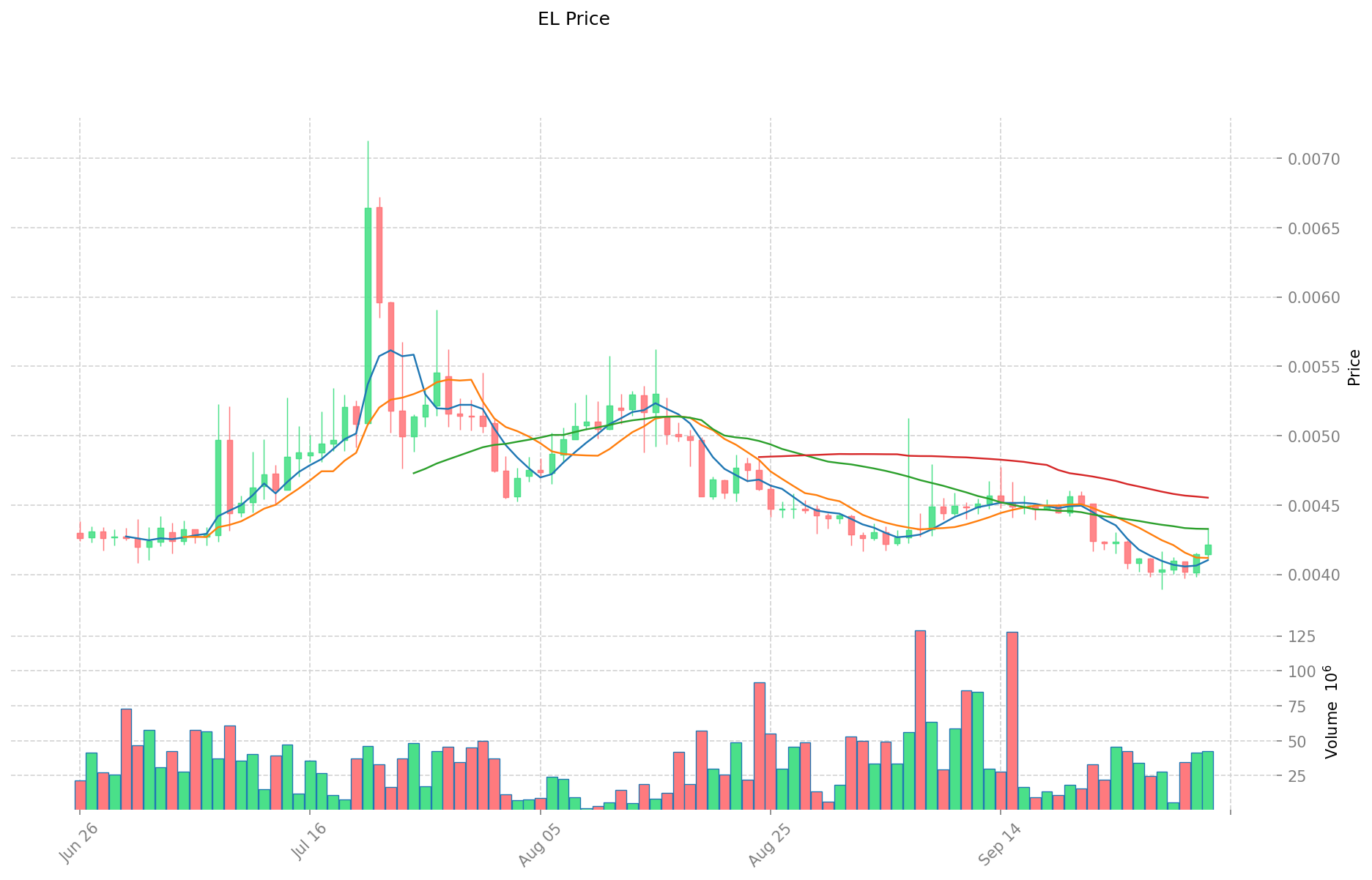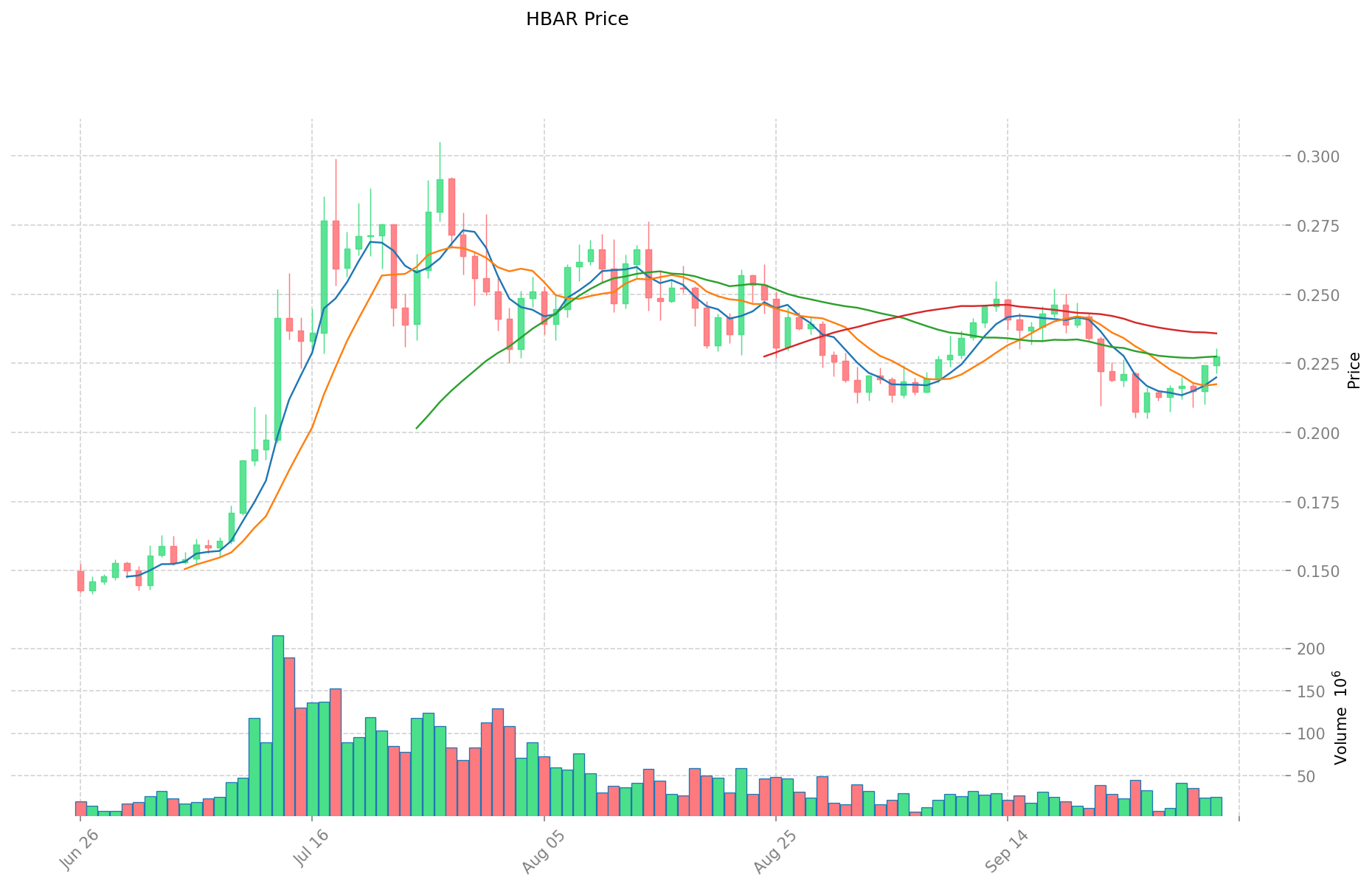EL vs HBAR: Comparing the Performance and Applications of Different Quantum Computing Architectures
Introduction: EL vs HBAR Investment Comparison
In the cryptocurrency market, the comparison between ELYSIA vs Hedera has always been an unavoidable topic for investors. The two not only show significant differences in market cap ranking, application scenarios, and price performance, but also represent different positioning in crypto assets.
ELYSIA (EL): Since its launch in 2020, it has gained market recognition for its RWA tokenization protocol.
Hedera (HBAR): Since its inception in 2019, it has been hailed as a fast, secure, and fair public ledger network, and is one of the cryptocurrencies with the highest global trading volume and market capitalization.
This article will provide a comprehensive analysis of the investment value comparison between ELYSIA and Hedera, focusing on historical price trends, supply mechanisms, institutional adoption, technological ecosystems, and future predictions, attempting to answer the question that concerns investors the most:
"Which is the better buy right now?"
I. Price History Comparison and Current Market Status
Historical Price Trends of EL (Coin A) and HBAR (Coin B)
- 2024: EL reached its all-time high of $0.0197 on December 14, 2024.
- 2024: HBAR experienced significant growth, with its price increasing by 331.64% over the year.
- Comparative analysis: In the current market cycle, EL has fallen from its high of $0.0197 to $0.0042, while HBAR has shown more resilience, currently trading at $0.22293.
Current Market Situation (2025-10-03)
- EL current price: $0.0042
- HBAR current price: $0.22293
- 24-hour trading volume: EL $159,153.84 vs HBAR $5,388,586.92
- Market Sentiment Index (Fear & Greed Index): 64 (Greed)
Click to view real-time prices:
- View EL current price Market Price
- View HBAR current price Market Price


II. Core Factors Affecting Investment Value of EL vs HBAR
Supply Mechanism Comparison (Tokenomics)
- HBAR: Limited supply that increases in value over time
- 📌 Historical Pattern: Adoption rates are the primary factor driving price cycles for HBAR.
Institutional Adoption and Market Applications
- Enterprise Adoption: HBAR stands out for its efficiency and low transaction costs, making it attractive for enterprise applications and smart contracts
- Market Integration: In 2023, HBAR's price surged after Dropp (a micropayment service using Hedera technology) was selected as a service provider for the Federal Reserve's FedNow instant payment platform
Technical Development and Ecosystem Building
- HBAR Technical Development: Hashgraph algorithm provides superior speed and scalability compared to traditional blockchains, with the Gossip protocol facilitating efficient information sharing between nodes
- Ecosystem Comparison: Hedera's technology offers minimal fees and instant finality, capable of processing extremely high transaction volumes per second
Macroeconomic and Market Cycles
- Long-term Investment Potential: Many experts are optimistic about HBAR's long-term investment prospects due to Hedera's technological advancements
- Market Projections: PricePrediction estimates HBAR could reach $0.70 by 2030, while Telegaon experts project a potential $20 value, though not before 2050
- Value Drivers: HBAR's growth potential depends largely on the continued expansion of the Hedera ecosystem and widespread enterprise adoption of its Hashgraph technology III. 2025-2030 Price Prediction: EL vs HBAR
Short-term Prediction (2025)
- EL: Conservative $0.00231 - $0.00421 | Optimistic $0.00421 - $0.00471
- HBAR: Conservative $0.15375 - $0.22282 | Optimistic $0.22282 - $0.31640
Mid-term Prediction (2027)
- EL may enter a growth phase, with an estimated price range of $0.00358 - $0.00557
- HBAR may enter a consolidation phase, with an estimated price range of $0.18328 - $0.32769
- Key drivers: Institutional capital inflow, ETFs, ecosystem development
Long-term Prediction (2030)
- EL: Base scenario $0.00521 - $0.00677 | Optimistic scenario $0.00677 - $0.00928
- HBAR: Base scenario $0.22166 - $0.37570 | Optimistic scenario $0.37570 - $0.53726
Disclaimer: This analysis is based on historical data and market trends. Cryptocurrency markets are highly volatile and unpredictable. This information should not be considered as financial advice. Always conduct your own research before making investment decisions.
EL:
| 年份 | 预测最高价 | 预测平均价格 | 预测最低价 | 涨跌幅 |
|---|---|---|---|---|
| 2025 | 0.00471408 | 0.004209 | 0.00231495 | 0 |
| 2026 | 0.0054876942 | 0.00446154 | 0.0039261552 | 6 |
| 2027 | 0.005571571152 | 0.0049746171 | 0.003581724312 | 18 |
| 2028 | 0.00732960083514 | 0.005273094126 | 0.00363843494694 | 25 |
| 2029 | 0.007246549602655 | 0.00630134748057 | 0.003402727639507 | 50 |
| 2030 | 0.009280309502009 | 0.006773948541612 | 0.005215940377041 | 61 |
HBAR:
| 年份 | 预测最高价 | 预测平均价格 | 预测最低价 | 涨跌幅 |
|---|---|---|---|---|
| 2025 | 0.3164044 | 0.22282 | 0.1537458 | 0 |
| 2026 | 0.285788932 | 0.2696122 | 0.231866492 | 20 |
| 2027 | 0.32768666788 | 0.277700566 | 0.18328237356 | 24 |
| 2028 | 0.3450707233116 | 0.30269361694 | 0.1604276169782 | 35 |
| 2029 | 0.427524464566056 | 0.3238821701258 | 0.181374015270448 | 45 |
| 2030 | 0.537255743804677 | 0.375703317345928 | 0.221664957234097 | 68 |
IV. Investment Strategy Comparison: EL vs HBAR
Long-term vs Short-term Investment Strategies
- EL: Suitable for investors focused on RWA tokenization and ecosystem potential
- HBAR: Suitable for investors seeking enterprise adoption and scalable technology
Risk Management and Asset Allocation
- Conservative investors: EL 20% vs HBAR 80%
- Aggressive investors: EL 40% vs HBAR 60%
- Hedging tools: Stablecoin allocation, options, cross-currency portfolios
V. Potential Risk Comparison
Market Risk
- EL: Lower liquidity and higher volatility
- HBAR: Susceptible to market-wide corrections and sentiment shifts
Technical Risk
- EL: Scalability, network stability
- HBAR: Potential security vulnerabilities, centralization concerns
Regulatory Risk
- Global regulatory policies may have different impacts on both assets
VI. Conclusion: Which Is the Better Buy?
📌 Investment Value Summary:
- EL advantages: RWA tokenization focus, potential for growth in niche market
- HBAR advantages: Enterprise adoption, scalable technology, institutional interest
✅ Investment Advice:
- Novice investors: Consider a higher allocation to HBAR due to its established position and enterprise adoption
- Experienced investors: Balanced portfolio with both EL and HBAR, adjusting based on risk tolerance
- Institutional investors: Focus on HBAR for its enterprise-grade technology and potential for widespread adoption
⚠️ Risk Warning: The cryptocurrency market is highly volatile. This article does not constitute investment advice. None
VII. FAQ
Q1: What are the main differences between EL and HBAR? Answer: EL focuses on RWA tokenization, while HBAR is known for its enterprise-grade technology and scalability. HBAR has higher market capitalization, trading volume, and institutional adoption compared to EL.
Q2: Which cryptocurrency has shown better price performance recently? Answer: HBAR has shown more resilience in the current market cycle. While EL has fallen from its all-time high of $0.0197 to $0.0042, HBAR is currently trading at $0.22293 and experienced significant growth of 331.64% in 2024.
Q3: What are the key factors driving the growth of HBAR? Answer: The main factors driving HBAR's growth are its efficient and low-cost transaction capabilities, enterprise adoption, integration with platforms like FedNow, and the continued expansion of the Hedera ecosystem.
Q4: How do the long-term price predictions for EL and HBAR compare? Answer: By 2030, EL is predicted to reach $0.00521 - $0.00928 in optimistic scenarios, while HBAR is projected to reach $0.22166 - $0.53726. Some experts even suggest HBAR could potentially reach $20, though not before 2050.
Q5: What investment strategies are recommended for EL and HBAR? Answer: For conservative investors, a portfolio allocation of 20% EL and 80% HBAR is suggested. For aggressive investors, the recommendation is 40% EL and 60% HBAR. Novice investors might consider a higher allocation to HBAR due to its established position.
Q6: What are the main risks associated with investing in EL and HBAR? Answer: EL faces risks related to lower liquidity and higher volatility, while HBAR is susceptible to market-wide corrections. Both cryptocurrencies are subject to technical risks such as scalability issues and potential security vulnerabilities, as well as regulatory risks that may impact their adoption and value.
Share
Content